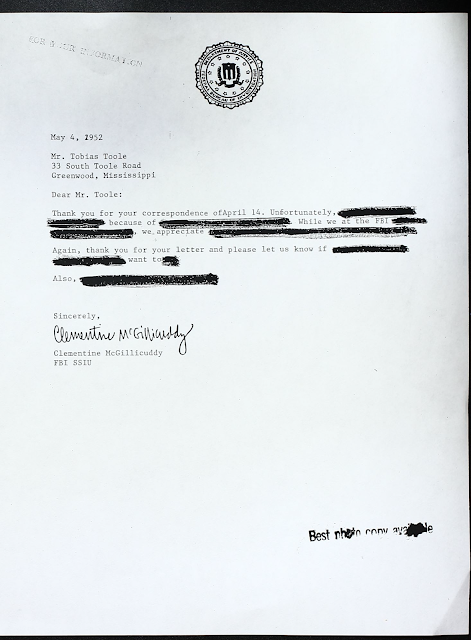Alex Brower
Information Services Director
The existence of the Sasquatch has been the source of many arguments, both familial and scientific. There have been videos of reported sightings, adamant campers with tall tales, and even college courses that debate or seemingly prove the existence (or not) of this creature. What does the Sasquatch have to do with libraries, one may ask? One daring investigator led the children of an afterschool program on a quest through admittedly fake (or are they?) primary source documents to learn the value of research.
 |
| Tracy Carr, Sasquatch Specialist (left) Sassy, Sasquatch Puppet (right) |
It all started when Tracy Carr, a librarian purportedly specializing in Sasquatches and real-life MLC Library Services Director, was invited to speak at the Neshoba County Library’s Sasquatch Week. A variety of “experts” presented information about various aspects of ‘Squatch life. At the end of each presentation, the adventurous attendees were polled to see who had been swayed towards believing in the beast. Ms. Carr needed to find a way to trick children and teach information literacy, but how?!
Enter Clementine McGillicuddy, Tobias Toole, and the mysterious Carl. These characters featured in four “primary source documents” that detailed the civilian Mr. Toole’s encounter with Carl, a suspected Sasquatch. Ms. McGillicuddy, an FBI agent from the Special Secret Issues Unit, made a sharpish safari to the Greenwood, Mississippi, site, ruining a presumably precious pair of pumps.
The ‘Squatch-seeking schoolchildren were instructed on the difference between primary and secondary sources. For those not in the know, or in the Special Secret Issues Unit, a primary source document is anything created at the time an event occurred. Examples include letters, diaries, newspaper stories, and photographs. Secondary sources are interpretations of primary source documents, like books written using diaries from the Civil War or a textbook written using interpretations of original research.
They were then presented with Ms. Carr’s “primary source documents”: three letters, one including a handy map, and a memo from the Special Secret Issues Unit. The children were tasked with putting them in order and discovering what events took place during the fateful days between February 3rd and May 4th, 1952. (These documents are included at the end of the post). The tale includes Mr. Toole’s original sighting and letter to Ms. McGillicuddy, hints at what may have been seen, and exposes the coverup that keeps Carl from certain discovery. After the students put the pieces together, Tracy had turned two doubting Thomases into totally taken-in Thomases. The investigators also got to make their own Sasquatch puppets.
 |
| Sassy the Sasquatch finger puppet conducting their own independent research. |
Primary Source Documents:
 |
| Letter from Tobias Toole to Clementine McGillicuddy |
 |
| Map from Tobias Toole, included in letter |
 |
| Memo from Clementine McGillicuddy to J.B. Simo |
 |
| Letter from Tobias Toole to Clementine McGillicuddy |
 |
| Redacted letter from Clementine McGillicuddy to Tobias Toole |
To do your own research using primary source documents, check here:
- Library of Congress Digital Collections
- Library of Congress’ primary documents sets (broken down by topic)
- Newspaper Source: Full text for 28 U.S. and international newspapers and more than 260 regional newspapers. In addition, full text television and radio news transcripts are provided from ABC, CBS News, CNN, Fox News, NPR, and more. Available through MAGNOLIA. Contact your library for your MAGNOLIA access code.
See your local library for an amazing array of secondary
source documents!
Interested in learning more about the Sasquatch and the lengths people have gone to find it? Check out these:
- Wild Thing (Podcast; may not be appropriate for children)
- Sasquatch Chronicles (Podcast; may not be appropriate for children)
- List of Sasquatch-Related Resources from Western Washington University
- Article from Smithsonian Magazine

No comments:
Post a Comment